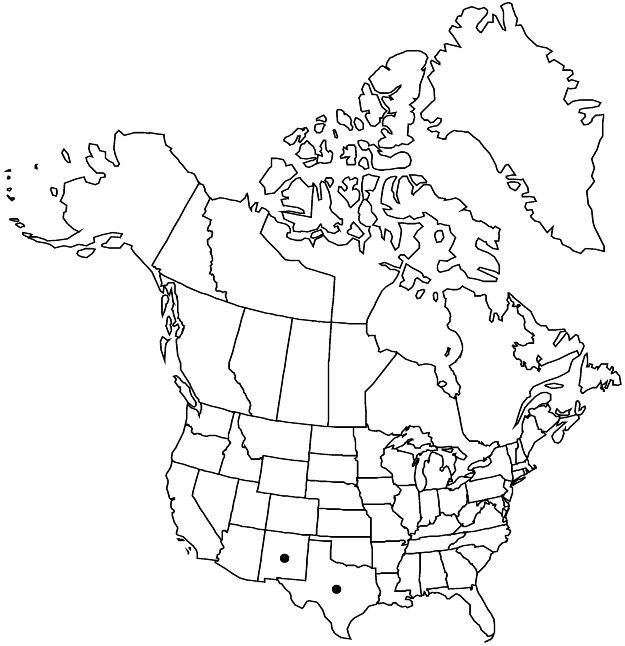Euphorbia acuta
Rep. U.S. Mex. Bound. 2(1): 189. 1859.
Herbs, perennial, with strongly thickened rootstock. Stems ascending to erect, 5–30 cm, uniformly and densely canescent or sericeous. Leaves opposite; stipules deciduous, sometimes appearing absent, distinct, brown, linear-subulate, thin, 0.3–0.8 mm, canescent; petiole 0.4–1.2 mm, moderately to densely canescent; blade ovate to lanceolate, 6–20 × 3–8 mm, base subsymmetric, rounded to cuneate, margins entire, strongly involute, apex long-acuminate, spinulose, abaxial surface canescent to densely sericeous, adaxial surface glabrous or sparsely canescent; 3-veined from base but only midvein conspicuous. Cyathia solitary at distal nodes; peduncle 1.3–3.2 mm. Involucre turbinate to urceolate, 2–2.6 × 1.7–2.5 mm, villous to lanate; glands 4, yellow-green to orange or red, slightly concave, oblong-elliptic, 0.2–0.4 × 0.6–1.5 mm; appendages white, flabellate, 1.1–2.1 × 0.2–0.6 mm, distal margin shallowly and irregularly toothed. Staminate flowers 20–25. Pistillate flowers: ovary strigose, pubescent to villous; styles 0.6–0.9 mm, 2-fid 1/2 length. Capsules subglobose to broadly ovoid, 2.8–3.7 mm diam., strigose, pubescent to villous; columella 2.3–3 mm. Seeds white, ovoid, 4-angled in cross section, 2.2–2.6 × 1.1–1.4 mm, smooth to finely reticulate. 2n = 28, 48, 56.
Phenology: Flowering and fruiting spring–fall.
Habitat: Desert scrub, grasslands, oak-juniper savannas, limestone, rocky, sandy, or clay soils.
Elevation: 400–1900 m.
Distribution

N.Mex., Tex., Mexico (Chihuahua, Coahuila).
Discussion
Euphorbia acuta is easily distinguished in the field by its relatively large, strongly involute, hairy, and acutely pointed leaves. The name Euphorbia acuta Engelmann has been proposed for conservation against the earlier name E. acuta Bellardi ex Colla (P. E. Berry et al. 2011).
Selected References
None.